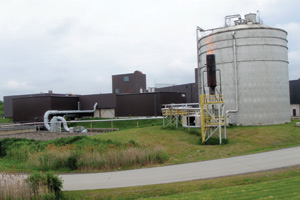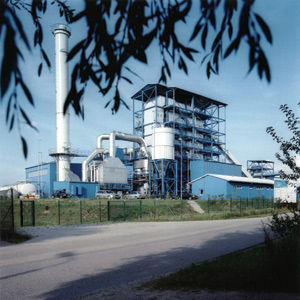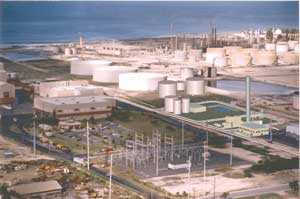January 2009
 View Full Print Edition
View Full Print EditionBusiness Briefs
Columns

Disaster Debris Shouldn't Be a Problem
By Rona Johnson

The Sweet Smell of Anaerobic Digestion
By Tim Portz

Biodiesel in the Sky and at Home
By Jessica Sobolik

New Year Sure to Bring Greenhouse Gas Policies
By Shelby Neal

Soy 2020 Can Help Fuel Biodiesel Success
By John Becherer
Featured

Emissions Eliminator
By Anna Austin
Companies that embrace biomass-to-energy applications face stiff emissions and pollution control requirements. Biomass Magazine examines Eisenmann Corp.'s dual flow wet electrostatic precipitation technology and boiler emissions compliance system, which will be installed in a major bourbon distillery in Kentucky.

Craving Corn and the Cob
By Ryan C. Christiansen
The ethanol industry's declaration of energy independence for the United States is leading producers to generate more energy from an acre of corn.

Go Green Pronto, Toronto
By Ron Kotrba
Toronto is implementing residential source-separated organics to divert tons of organic matter-about 30 percent of all household trash-from landfills. Currently some of the material is being composted and turned into green fertilizer. Once its plans to construct two large anaerobic digestion facilities are fulfilled, the city will be making green energy to help offset the cost of implementing its green bin program.

Size Matters
By Anna Austin
The logistics involved in developing a biomass-based power project can be daunting. Sourcing, transporting and storing biomass are all issues that need to be addressed, but the size of the facility needs to be determined before that can happen. Biomass Magazine talks to industry experts who have different ideas about the perfect size for biomass-fired power plants.

A World of Potential
By Travis Hochard
Experts at the 4th World Biofuels Symposium offered their impressions of the global potential for ethanol, biodiesel and beyond.

Re-New-able York City
By Ron Kotrba
New York City, a cultural hub, is on the verge of a citywide bioheat mandate. Biodiesel Magazine talks with those working toward that end.
Competition Heats Up
By Erin Krueger
Last year's high crude oil prices prompted many home heating oil consumers to brace for a dramatic price increase, but in November, prices were actually lower than they were the previous year, which could make biodiesel-blended fuel a less attractive option. On the bright side, low-priced heating oil may prevent customers from switching to natural gas, and Bioheat is easier on the environment than fossil fuels.

Aloha Biodiesel
By Frank Zaworski
Hawaiians are on a mission to expand the use of local renewable and alternative energy sources to supply the islands' power needs. The use of locally produced biodiesel is critical to the state's success.

Aviation Alternatives
By Jerry W. Kram
Where there is crisis, there is often opportunity. Sky-high fuel costs have helped push many airlines to the brink of financial collapse. Now, however, they're banding together to look for alternative fuels, with an emphasis on algae. This could be the market that drives the commercialization of this long-awaited feedstock.

Breathing Room
By Kris Bevill
In what could be considered a gloomy year for biofuels, Congress passed much-needed tax incentive extensions for the biodiesel industry as part of the Emergency Economic Stabilization Act of 2008.
Contributions
Producing the Next Generation of Green Hydrocarbons
By Heidi Vincent
Commercially producing bio-oil from biomass is at the core of Ensyn's expertise. The company proves that multiple sources can be used when converting biomass into bio-oil for the production of biomass-based chemicals, bioenergy and renewable transportation fuels.
















